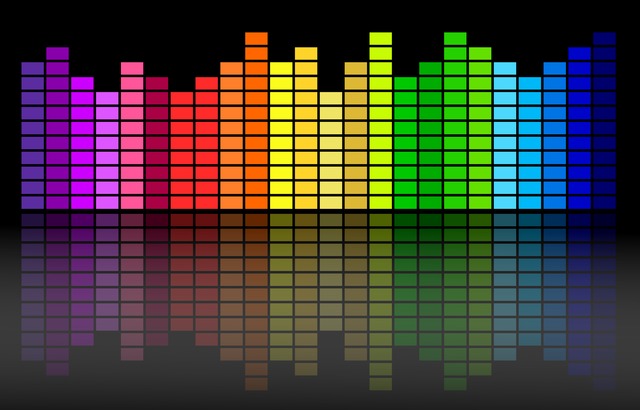3,600 microphones and counting: how the sound of the Olympics is created
Professor Joshua Reiss from Queen Mary's School of Electronic Engineering and Computer Science has written for The Conversation on the audio history of the Olympics and Covid-19's impact on Olympic sound design.

The modern-era Olympics are among the largest sporting events in the world – but relatively few people actually get to watch the action live and in person. So the four-yearly Games have proved to be an important driver for audiovisual progress.
The Tokyo 1964 Games were the first to be broadcast internationally. More than 14 hours of black and white footage was transmitted to the first geostationary satellite and, from there, to 23 countries around the world.
The Syncom 3 satellite had been launched only two months prior, which made the broadcast a remarkable achievement. But the challenges didn’t stop there.
In late 1963, acoustics experts in Tokyo had discovered that the sound system at the new Yoyogi National Stadium had major issues. The main stand was covered by architect Kenzo Tange’s sweeping tent-like roof which – although an instant architectural classic – proved a headache for sound designers. The canopy reflected the sound beneath it, creating a low-pitched boom. Delays from the speakers meant that people’s amplified voices were almost unintelligible at the back of the stadium. And the speakers themselves had a very limited frequency response, eliminating almost everything that was outside of the range of the adult human voice.
Olympic sound design
The Tokyo 1964 opening ceremony involved more than 900 musicians and singers. To amplify the music, 20 microphones were placed around the band and performers. Delays were introduced to the speakers so that the audience in the stadium heard the sound in time with what they saw happening further away on the field. Pre-recorded sound effects, such as the ringing of Japanese temple bells, were mixed in with live sounds for radio and TV broadcast.
The set up had its limitations. Microphones were required at useful locations – the ceremonial platform, the royal box, the orchestra, the control room – in order to pick up interviews and announcements. But these microphones were fixed in place.
That meant, among other things, that there were restrictions on speaker placements and levels, too, in order to avoid the howling sound loops of acoustic feedback, which happen when a microphone placed too near to a speaker picks up too much of its own sound output being amplified and played back.
As the audiences for subsequent Olympics have grown, we’ve gone from wanting to hear the action, to wanting to feel as if we’re in the front row, to now wanting to feel as if we’re in the middle of the action. And each innovation at one Olympics has become the baseline expectation for the next one.
At the 1984 summer Games, sound engineers pioneered acoustic simulation to model the acoustics of the main venue, the Los Angeles Memorial Coliseum, which was then used to predict sound characteristics everywhere in the stadium. This led to advanced modelling of the acoustic properties of every venue at the 1988 Winter Olympics in Seoul.
Sydney 2000 saw the introduction of Digital audio networking, the transmission of high-quality uncompressed audio over the internet without significant losses or delays – a new technology at the time. Now it can be found in studios, music venues, schools and meeting centres all over the world.
Sound in COVID times
COVID has completely changed Olympic sound design. The lack of spectators means that the roar of the crowd is entirely absent. This alters the acoustics of the space. Sound echoes around a stadium very differently when there are no bodies and clothing to absorb the sound. And with relative silence compared to the constant high volume of tens of thousands of people, we end up hearing cicadas buzzing, lights humming and camera shutters clicking.
This is addressed partly by fake crowd noise. Customised recordings of cheering at similar events at previous Olympics are being played out of the speakers around the stadium.
Many sports broadcasters have also been overlaying what they call an audio carpet, which is ambient sound of a full stadium when there is no action taking place. But canned crowd noise comes with challenges of its own as it clashes completely with the visuals of empty seats.
From a sound design perspective, however, having empty stadiums is not all bad. Sometimes, it’s just different. Microphones are still placed very close to a sound source to capture just that sound. And with even less background noise, these spot mics are able to better capture impact sounds – the crack, slap and thump associated with rackets, wheels, bodies and earth colliding. We can hear more clearly the coaching on the sidelines and the shouting between players on a team.
Studies have shown that we expect such sounds to be present in a believable sound scene. The lack of such nuances can affect how realistic we perceive a recording to be.
New methods for capturing, rendering and even enhancing the sounds of Tokyo 2020 had specialists excited well before COVID hit. More than ever before, these Olympics are being delivered in what is known as immersive audio.
Microphones – 3,600 of them – have been deployed all over, hung from closed-venue ceilings, embedded in rock-climbing walls and placed on waterpolo goalposts. The variety of sounds they capture are mixed and broadcast in such a way that viewers hear what the athletes might hear and more.
The Olympics are, once again, at the forefront of sound design innovation. As Nuno Duarte, senior manager of audio for the Olympic Broadcasting Services recently put it: “We don’t see problems; we see challenges, and we also see opportunities.”
This article was first published in The Conversation on 28th July.
Related items

6 November 2024
